#karl brunner
Explore tagged Tumblr posts
Text
╭── ⋅ ⋅ ── ✩ ── ⋅ ⋅ ──╮
_________ ׂׂૢ་༘࿐ Silly Intro cuz I forgor to do one!!
Hold on, fella! You may call me Relda or Ray.
I’m from Albania but I currently live in Germany (Munich/München).
I’m very interested in the Third reich (especially about the Luftwaffe/WW2 German airforce and the LSSAH division) and the B.U.F (British Union of F4c1sm)
I’m Catholic, I believe in God Jesus. But I respect other religions. (Expect S4t4nism or Paganism.)
I’m a Volleyballist, Basketball Player and a Painter. If you know me from Reddit or Twitter, you may know one of my ww2 Propaganda artworks ;).
•───୨୧───•
My Favs from the Third Reich are:
╔⏤⏤⏤╝❀╚⏤⏤⏤╗
[ Führer’s Inner Circle ]
Hermann Göring
Ernst Kaltenbrunner
╚⏤⏤⏤╗❀╔⏤⏤⏤╝
———————————
���⏤⏤⏤╝❀╚⏤⏤⏤╗
[ Luftwaffe ]
Werner Mölders
Adolf Galland
Walter Nowotny
Egmont Prinz Prinz zur Lippe-Weißenfeld
Heinrich Bartels
Werner Baumbach
Herbert Ihlefeld
╚⏤⏤⏤╗❀╔⏤⏤⏤╝
———————————
╔⏤⏤⏤╝❀╚⏤⏤⏤╗
[ SS ]
Theodor Wisch
Sepp Dietrich
Kurt Meyer
Max Wünsche
Karl Höcker
Richard Bär
Rudolf Höss
Joseph Kramer
Eduard Wirths
Karl Brandt
Klaus Barbie
Walter Schellenberg
Wilhelm Höttl
Adolf Eichmann
Alois Brunner
Otto Skorzeny
Amon Göth
Fritz Witt
Werner Pötschke
╚⏤⏤⏤╗❀╔⏤⏤⏤╝
———————————
╔⏤⏤⏤╝❀╚⏤⏤⏤╗
[ Kriesgmarine ]
Erich Topp
Otto Kretschmer
Heinrich Liebe
Günther Prien
Herbert Schultze
Albrecht Brandi
Joachim Schepke
╚⏤⏤⏤╗❀╔⏤⏤⏤╝
———————————
My Favs from the B.U.F are:
╔⏤⏤⏤╝❀╚⏤⏤⏤╗
[ B.U.F ]
Oswald Mosley
William Joyce
John Beckett
Malcolm Campbell
Arthur Gilligan
Josslyn Hay
Neil Francis Hawkins
╚⏤⏤⏤╗❀╔⏤⏤⏤╝
•───୨୧───•
DNI:
-> Commun1sts, extremist Bolsheviks, Zios, Reincarnations.
You’re free to DM, or ask me stuff in my inbox‼️🫶🏻
╰── ⋅ ⋅ ── ✩ ── ⋅ ⋅ ──╯
23 notes
·
View notes
Text
THE MAD BUTCHER (1971) – Episode 209 – Decades Of Horror 1970s
“Meat is meat.” Where have you heard that before? Join your faithful Grue Crew – Doc Rotten, Chad Hunt, Bill Mulligan, and Jeff Mohr – as they relish the chance to dine out with Victor Buono in The Mad Butcher(1971). Pssst! Despite the title, he has a certificate of sanity prominently displayed on his wall.
Decades of Horror 1970s Episode 209 – The Mad Butcher (1971)
Join the Crew on the Gruesome Magazine YouTube channel! Subscribe today! And click the alert to get notified of new content! https://youtube.com/gruesomemagazine
Decades of Horror 1970s is partnering with the WICKED HORROR TV CHANNEL (https://wickedhorrortv.com/) which now includes video episodes of the podcast and is available on Roku, AppleTV, Amazon FireTV, AndroidTV, and its online website across all OTT platforms, as well as mobile, tablet, and desktop.
After being released from a mental hospital, Otto returns to his old job as a butcher. He tries to adjust to his new life, but after a bitter argument with his wife, he accidentally kills her. Fearing he will be sent back to the hospital, he grinds up her body and sells it as sausages. The popularity of his new sausage recipe necessitates that others find their way into his butcher’s display case.
Directed by: Guido Zurli (as John Zurli)
Writing Credits: Dick Randall (as Robert H. Oliver) & Dag Molin (screenplay); (story by) Charles Ross (as Karl Ross)
Selected Cast:
Victor Buono as Otto Lehman
Franca Polesello as Berta Hensel
Brad Harris as Mike Lawrence
Dario Michaelis as Inspector Klaus
Karin Field as Hanna Lehman (as Karen Field)
Luca Sportelli as Karl Brunner
Hansi Linder as Frieda Ulm
If you are a fan of Victor Buono (Batman,1966-68; What Ever Happened to Baby Jane?, 1962; Hush…Hush, Sweet Charlotte, 1964), then we have the episode for you. The Mad Butcher (1971) is a unique beast of a film: a dark comedy in the vein of Sweeney Todd. It’s bizarre, clumsy, silly, yet oddly entertaining. And, well, “Meat is Meat,” yes? Check out what the Grue-Crew think of this often-overlooked nugget.
At the time of this writing, The Mad Butcher is available to stream from the Classic Horror Movie Channel and YouTube.
Gruesome Magazine’s Decades of Horror 1970s is part of the Decades of Horror two-week rotation with The Classic Era and the 1980s. In two weeks, the next episode, chosen by guest host Gregory Crosby, will be Countess Dracula (1971), another Hammer Film, directed by Peter Sasdy and starring Ingrid Pitt! Be there!
We want to hear from you – the coolest, grooviest fans: comment on the site or email the Decades of Horror 1970s podcast hosts at [email protected].
Check out this episode!
3 notes
·
View notes
Text

Karl Typeface by Laurenz Brunner
Purchase
3 notes
·
View notes
Text
1 note
·
View note
Text
0 notes
Text
Family Practice
Simon has a love-hate relationship with his father. When his parents go on holiday, Simon initiates a seductive game of cat-and-mouse with his father’s mistress and gets disastrously tangled up in the sticky family network. Credits: TheMovieDb. Film Cast: Simon Kaufmann: Dimitri Stapfer Karl Kaufmann: Dani Levy Agnes Kaufmann: Sibylle Canonica Sonja Brunner: Katja Kolm Fabienne Schmid: Miriam…
0 notes
Text

« Il y a bien un Dieu, mais c’est un Dieu d’amour qui ne peut certainement pas envoyer qui que ce soit dans les tourments éternels. »
C’est ce que déclarent les libéraux. Des théologiens récents comme Karl Barth, Emil Brunner, Paul Tillich et d’autres ont nié ou minimisé la doctrine de l’enfer.
De nombreuses sectes issues du christianisme ont en commun leur négation de l’enfer.
1 L’Église de la Science Chrétienne considère que l’enfer est une erreur de l’esprit mortel
2 Les Témoins de Jéhovah déclarent que les méchants seront tout simplement anéantis.
3 Les Mormons croient en un enfer, mais selon eux, les tourments infligés ne dureront pas éternellement.
Pour eux, la vie après la mort se situe à trois niveaux : céleste, terrestre et « téleste ».
Au niveau céleste seront tous les Mormons qui se trouvent dans l’état intermédiaire en attendant de devenir des dieux.
Le niveau terrestre est accordé à tous les chrétiens et à tous ceux qui auront rejeté le message des Mormons.
Enfin, le niveau « téleste » est réservé à ceux qui sont destinés à l’enfer et qui attendent la résurrection finale. D’après les Mormons, ils seront finalement sauvés ; leur châtiment ne durera donc pas éternellement.
4 Les Adventistes du Septième Jour affirment qu’un jour Dieu effacera le péché et les pécheurs et créera un nouvel univers exempt de mal.
« L’idée qu’il puisse exister un ciel offrant un bonheur infini s’oppose à celle qu’il puisse exister simultanément un enfer où des créatures souffriraient les pires tourments.
En effet, les personnes destinées au ciel ne pourraient connaître une félicité parfaite en sachant que d’autres souffrent cruellement en enfer, sans aucun espoir de changement.
Les habitants du ciel voudraient certainement aller en enfer pour soulager la misère des damnés et combler quelque peu leurs besoins.
À en juger d’après le ministère qu’il a rempli sur la terre, Jésus-Christ serait le premier à descendre en enfer pour venir en aide aux perdus.
Dieu se trouverait alors seul dans son ciel ; à son tour, il irait rejoindre tous les autres.
Où alors, il faudrait qu’il change tout son plan » Quels que soient les dénis et les doutes des hommes quant à l’enfer, la Bible affirme solennellement son existence et sa réalité.
Le croyant authentique ne peut que souscrire aux paroles de l’apôtre Paul :
« Certes non ! Que Dieu soit (reconnu pour) vrai, et tout homme pour menteur, selon qu’il est écrit : Afin que tu sois trouvé juste dans tes paroles, et que tu triomphes dans ton procès » (Romains 3:4).
0 notes
Photo


the cover to Marvel Premiere (1972) #13 by Frank Brunner
68 notes
·
View notes
Photo

I love his tie. I want this tie.
37 notes
·
View notes
Photo

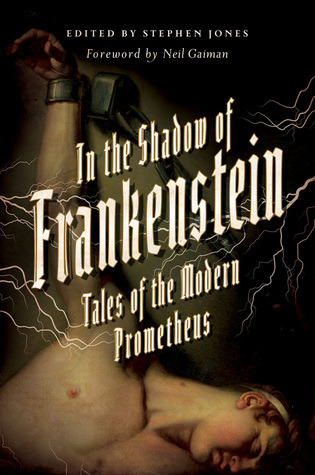



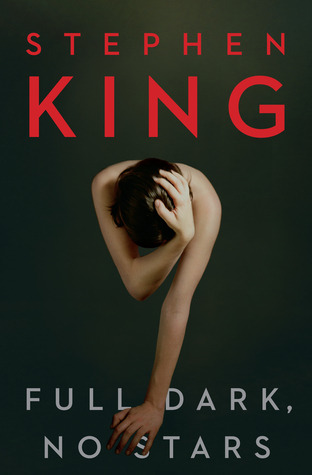

Short Story Collections: Horror edition
In the Shadow of Frankenstein: Tales of the Modern Prometheus by Stephen Jones, Neil Gaiman
Frankenstein... His very name conjures up images of plundered graves, secret laboratories, electrical experiments, and reviving the dead.
Within these pages, the maddest doctor of them all and his demented disciples once again delve into the Secrets of Life, as science fiction meets horror when the world's most famous creature lives again.
Here are collected together for the first time twenty-four electrifying tales of cursed creation that are guaranteed to spark your interest—with classics from the pulp magazines by Robert Bloch and Manly Wade Wellman, modern masterpieces from Ramsey Campbell, Dennis Etchison, Karl Edward Wagner, David J. Schow, and R. Chetwynd-Hayes, and new contributions from Graham Masterton, Basil Copper, John Brunner, Guy N. Smith, Kim Newman, Paul J. McAuley, Roberta Lannes, Michael Marshall Smith, Daniel Fox, Adrian Cole, Nancy Kilpatrick, Brian Mooney and Lisa Morton.
Plus, you're sure to get a charge from three complete novels: The Hound of Frankenstein by Peter Tremayne, The Dead End by David Case, and Mary W. Shelley's original masterpiece Frankenstein; or, The Modern Prometheus.
As an electrical storm rages overhead, the generators are charged up, and beneath the sheet a cold form awaits its miraculous rebirth. Now it's time to throw that switch and discover all that Man Was Never Meant to Know.
She Said Destroy by Nadia Bulkin
A dictator craves love--and horrifying sacrifice--from his subjects; a mother raised in a decaying warren fights to reclaim her stolen daughter; a ghost haunts a luxury hotel in a bloodstained land; a new babysitter uncovers a family curse; a final girl confronts a broken-winged monster... Word Horde presents the debut collection from critically-acclaimed Weird Fiction author Nadia Bulkin. Dreamlike, poignant, and unabashedly socio-political, She Said Destroy includes three stories nominated for the Shirley Jackson Award, four included in Year's Best anthologies, and one original tale, with an Introduction by Paul Tremblay.
His Hideous Heart by Dahlia Adler, Kendare Blake, Rin Chupeco, Lamar Giles, Tessa Gratton, Tiffany D. Jackson, Stephanie Kuehn, Amanda Lovelace, Marieke Nijkamp, Emily Lloyd-Jones, Hillary Monahan, Caleb Roehrig, Fran Wilde
Thirteen of YA’s most celebrated names reimagine Edgar Allan Poe’s most surprising, unsettling, and popular tales for a new generation.
Edgar Allan Poe may be a hundred and fifty years beyond this world, but the themes of his beloved works have much in common with modern young adult fiction. Whether the stories are familiar to readers or discovered for the first time, readers will revel in Edgar Allan Poe’s classic tales, and how they’ve been brought to life in 13 unique and unforgettable ways.
The Doll-Master and Other Tales of Terror by Joyce Carol Oates
From one of our most important contemporary writers, The Doll-Master and Other Tales of Terror is a bold, haunting collection of six stories.
In the title story, a young boy becomes obsessed with his cousin’s doll after she tragically passes away from leukemia. As he grows older, he begins to collect “found dolls” from the surrounding neighborhoods and stores his treasures in the abandoned carriage house on his family's estate. But just what kind of dolls are they? In “Gun Accident,” a teenage girl is thrilled when her favorite teacher asks her to house-sit, even on short notice. But when an intruder forces his way into the house while the girl is there, the fate of more than one life is changed forever. In “Equatorial,” set in the exotic Galapagos, an affluent American wife experiences disorienting assaults upon her sense of who her charismatic husband really is, and what his plans may be for her.
In The Doll-Master and Other Tales of Terror, Joyce Carol Oates evokes the “fascination of the abomination” that is at the core of the most profound, the most unsettling, and the most memorable of dark mystery fiction.
Full Dark, No Stars by Stephen King
"I believe there is another man inside every man, a stranger..." writes Wilfred Leland James in the early pages of the riveting confession that makes up "1922." the first in this pitch-black quartet of mesmerizing tales from Stephen King. For James, that stranger is awakened when his wife, Arlette, proposes selling off the family homestead and moving to Omaha, setting in motion a gruesome train of murder and madness.
In "Big Driver," a cozy-mystery writer named Tess encounters the stranger along a back road in Massachusetts when she takes a shortcut home after a book-club engagement. Violated and left for dead, Tess plots a revenge that will bring her face-to-face with another stranger: the one inside herself.
"Fair Extension," the shortest of these tales, is perhaps the nastiest and certainly the funniest. Making a deal with the devil not only saves Dave Streeter from a fatal cancer but provides rich recompense for a lifetime of resentment.
When her husband of more than twenty years is away on one of his business trips, Darcy Anderson looks for batteries in the garage. Her toe knocks up against a box under a worktable and she discovers the stranger inside her husband. It's a horrifying discovery, rendered with bristling intensity, and it definitely ends a good marriage.
Like Different Seasons and Four Past Midnight, which generated such enduring films as The Shawshank Redemption and Stand By Me, Full Dark, No Stars proves Stephen King a master of the long story form.
The Weird: A Compendium of Strange and Dark Stories by Jeff VanderMeer, Ann VanderMeer, George R.R. Martin, Bob Leman, Haruki Murakami, Mervyn Peake, Michael Chabon, Neil Gaiman, William Gibson, Franz Kafka, Stephen King, Kelly Link
From Lovecraft to Borges to Gaiman, a century of intrepid literary experimentation has created a corpus of dark and strange stories that transcend all known genre boundaries. Together these stories form The Weird, and its practitioners include some of the greatest names in twentieth and twenty-first century literature.
Exotic and esoteric, The Weird plunges you into dark domains and brings you face to face with surreal monstrosities. You won't find any elves or wizards here...but you will find the biggest, boldest, and downright most peculiar stories from the last hundred years bound together in the biggest Weird collection ever assembled. The Weird features 110 stories by an all-star cast, from literary legends to international bestsellers to Booker Prize winners: including William Gibson, George R. R. Martin, Stephen King, Angela Carter, Kelly Link, Franz Kafka, China Miéville, Clive Barker, Haruki Murakami, M. R. James, Neil Gaiman, Mervyn Peake, and Michael Chabon.
#horror#short stories#horror stories#reading recs#book recs#reading recommendations#Book Recommendations#library#public library#reading list#tbr#currently reading#booklist#booklr#scary stories
42 notes
·
View notes
Photo
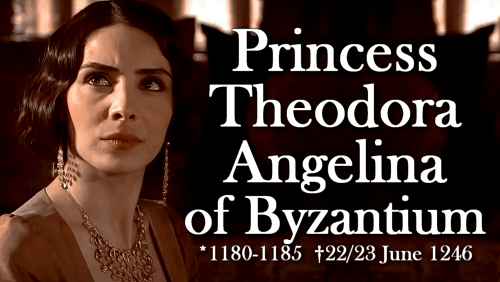








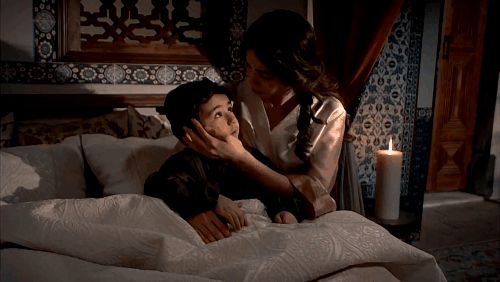
Byzantine Imperial Family & House of Babenberg: Princess Theodora Angelina of Byzantium
Theodora’s parentage is uncertain. She was probably a niece of Byzantine Emperor Isaac II Angelos. Most likely her mother was one of his sisters but it could also be possible that her father was Isaac’s brother John. Whoever her parents were, she was raised at court in Constantinople.
She was born into turbulent times. Rebellions and wars dominated the last days of the Byzantine Empire. In 1203, when Theodora was either in her late teens or early twenties, she left Constantinople for Vienna to marry Duke Leopold VI of Austria and Styria. Leopold was the grandchild of Byzantine princess Theodora Komnene. The celebrations in November of this year are said to have been magnificent. Noteworthy guests were the poet Walther von der Vogelweide, who might have even performed there, and probably the unknown writer of The Song of the Nibelungs. According to historian Karl Brunner, the wedding inspired the fictional wedding of Kriemhield to King Etzel. So many guests wanted to attend Theodora’s and Leopold’s wedding that not all of them fit into the city.
But why would a Byzantine princess marry the ruler of Austria? The reasons were simple. Austria hoped for a strong alliance against the Hungarians who threathened their border and the Byzantine Empire promised themselves a better relationship with and the participation in a crusade of the German King Philipp of Swabia, who was already married to Theodora’s cousin Irene Angelina. But all of this was rendered moot when the Byzantine Empire broke apart.
Not too much is known about Theodora during the lifetime of her husband. The couple had seven children: German Queen Margarete, Duchess Agnes of Saxony, Hereditary Duke Leopold of Austria, Hereditary Duke Heinrich the Cruel of Austria, Landgravine Gertrude of Thuringia, Duke Frederick II the Quarrelsome of Austria and Styria and Margravine Constantia “Konstanze” of Meißen. Theodora most likely used her influence when it was time to find a bride for her son Frederick. It was most likely her doing that he married Princess Eudokia Laskarina of Nicaea. However the marriage did not last long.
Theodora did not really have luck with her sons. Her oldest and favourite son died when he fell of a tree while playing. She never really got over this loss. Heinrich rebelled against his father when he was away and chased his mother out of her home in Hainburg. Frederick, who was described by contemporaries as talented but arrogant and rampant, took away all his mother’s possessions and threatened to cut off her breasts if he ever caught her. Theodora fled to Austria’s archnemesis Bohemia where she could put her trust in her cousin’s and the German king’s daughter Kunigunde of Hohenstaufen who was Queen consort of Bohemia at the time. From there, she went to Kunigunde’s father and complained about her son. In 1235, at the Imperial Diet in Mainz an imperial court decided in favour of Theodora and she returned to Austria. When Frederick died in 1246, the first House of Austria aka the House of Babenberg ceased to exist in its male line.
In her last years, Theodora became a nun at Lilienfeld Abbey. She died either on June, 22nd or 23rd in the year 1246. It is very likely that she inspired a famous German lullaby called Heia popeia. The ancient Greek words Hoide o paide mean Sleep, o child which over the years became Heia popeia with the common people.
// Nur Fettahoğlu in Magnificent Century (2011-14)
#historyedit#women in history#historic women#European history#Middle Ages#1200s#13th century#Austrian history#byzantine empire#House of Babenberg#German history#Theodora Angelina#Angelos family
87 notes
·
View notes
Text
Die Beratung zur Aufnahme der sexuellen Identität in Artikel 3 des Grundgesetzes
Um 1 Uhr nachts wurde heute dieser Gesetzentwurf der Grünen, Linken und der FDP beraten. Er wurde dem Ausschuss für Recht und Verbraucherschutz überwiesen, wo nun darüber entschieden wird, ob der Bundestag ihn annehmen sollte oder nicht.
Die erste Rednerin ist Ulle Schauws von den Grünen. Sie ist die frauen- und queerpolitische Sprecherin der Fraktion und lebt mit ihrer Lebenspartnerin zusammen, weswegen Queerpolitik eines ihrer Herzensthemen ist. Sie sagt, dass das Grundgesetz endlich aufhören muss, Homosexuelle als Bürger zweiter Klasse zu behandeln. Wenn die sexuelle Identität bereits 1949 im Grundgesetz gestanden hätte, wäre vielen Menschen viel Leid erspart geblieben. Es dürfe nie wieder geschehen, dass eine politische Stimmungslage zur Gefahr für die Freiheit und Würde Einzelner werden kann.
Volker Ulrich von der CSU. Er hat absolut nichts mit Queerpolitik am Hut, hielt aber zwischen 2014 und 2017 die meisten Reden der Unionsfraktion. Während seiner Zeit als Stadtrat in Augsburg hat er außerdem dafür gesorgt, dass dort die Straßenprostitution komplett verboten wurde. Überraschenderweise ist er trotzdem offen dafür, die sexuelle Identität ins Grundgesetz zu schreiben. Es wäre nur noch zu klären, ob man “sexuelle Identität” oder “sexuelle Ausrichtung” (wie es in der EU-Grundrechtecharta steht) schreibt. Außerdem soll im Bundestag bald über das Verbot von geschlechtszuweisende Operationen an Kinder und das Verbot von Konversionstherapien gesprochen werden. Er schlägt vor, den Vorschlag offen und ehrlich in einer Anhörung zu diskutieren.
Fabian Jacobi von der AfD. Bitte haltet eure Kotztüten und/oder Bingo-Karten bereit. Er sagt erstmal, dass ihm nicht recht klar ist, was der Antrag bewirken soll (Schreib dich nicht ab - lern lesen und schreiben). Außerdem meint er, dass Sichtbarmachen von Homosexuellen würde sie “absondern” und die homosexuellen Menschen würden es sich gar nicht wünschen, sichtbar gemacht zu werden. Außerdem wäre der Antrag nur Symbolpolitik (es ist zwar ein Gesetzentwurf und kein Antrag, aber wie wir wissen, hat die AfD allgemein ein paar Verständnisprobleme). Am Ende der Rede wird noch kurz gegen den Islam gehetzt.
Karl-Heinz Brunner von der SPD. Er ist im Rechtsausschus für die Gleichstellung von Lesben und Schwulen zuständig. 2014 war er bei der OSZE-Beobachtermission in der Ukraine dabei und hat sich dort auch mit LGBT-Verbänden getroffen. Ursprünglich hat er auch für den SPD-Parteivorsitz kandidiert, zog seine Kandidatur aber zurück. Der Marsch des Stolzes, der mit dem Stonewall-Aufstand begonnen hat, sei noch nicht zu Ende, sagt er. Er macht Hoffnung: Mit einer öffentlichen Anhörung könne es möglich sein, dass auch die CDU zustimmt und damit die nötige Zweidrittelmehrheit erreicht wird.
Jens Brandenburg von der FDP. Er wohnt mit seinem Lebenspartner zusammen und ist Mitglied im Kuratorium der Bundesstifung Magnus Hirschfeld sowie Sprecher für LGBT-Rechte der FDP. Er bezieht sich auf eine Aussage von Thorsen Frei von der Union, der meinte eine solche Änderung würde das Grundgesetz unnötig aufblähen. Also hat er einfach eine Ausgabe des Grundgesetzes mitgebracht, um zu zeigen, dass da sehr wohl noch Platz ist (trotzdem toppt nichts den Typen von den Linken, der mal nen Aluhut für die AfD mitgebracht hat). Auch er sagt, dass eine politische Stimmungslage nie wieder zur Gefahr für die Freiheit und Würde Einzelner werden dürfe (Wer hat da jetzt bei wem abgeschrieben?). Am Ende wendet er sich an die Union: Die FDP habe bei diesem Thema früher auch eine andere Meinung gehabt (soweit ich weiß, hat sich das erst mit Westerwelle geändert). Die Union solle nun nachziehen und sich, ohne Scheuklappen, von Argumenten überzeugen lassen.
Doris Achelwilm von den Linken ist die letzte Rednerin. Sie ist die Sprecherin der Linken für Gleichstellung, Medienpolitik und Queerpolitik. Sie führt auf, dass es dieses Diskriminierungsverbot schon in anderen Ländern, wie Schweden, Portugal und Mexiko, sowie in einigen deutschen Landesverfassungen wie der von Bremen, bereits gibt, im Grundgesetz jedoch nicht. Das müsse sich nun ändern. Außerdem spricht sie an, dass sich die Abschaffung des Transsexuellengesetzes immer noch hinzieht und es immer noch Gewalt- und Hasskriminalität gegen queere Menschen gibt. Eine Aufnahme der sexuellen Identität ins Grundgesetz könne diese Probleme zwar nicht alle auf einen Schlag heilen, aber einen anderen Rahmen setzen.
167 notes
·
View notes
Photo
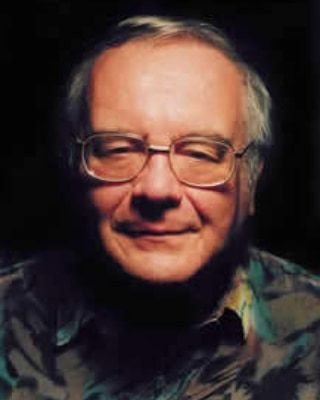
Ramsey Campbell. Escritor británico, responsable de la selección de relatos de "Horror 3" que presenté en mi espacio de forma reciente. Infuenciado en los inicios de su carrera como escritor por H.P. Lovecraft (ya hablaré de este caballero más adelante), a partir de los 70's mostró un estilo más propio. En la selección elaborada por él en el libro ya mencionado tomó excelentes relatos, comenzando por uno de Stephen King, continuando con laureadas y laureados escritoras y escritores: Lisa Tuttle, Tanith Lee, Joan Aiken, Marianne Leconte, Drothy K. Haynes, Katheleen Resh, Steve Rasnic Tem, Wade Wellman, Marc Laidlaw, Bob Shaw, Kit Reed, James Wade, Graham Masterton, Karl Edwart Wagner, John Brunner, John Burke, Greg Bear, Felice Picano, Andrew J. Offutt. Por supuesto también había uno de su puño y letra. Disfruté cada uno de ellos. . . . . . #elrincóndelescritornovato #elrincondelescritornovato #librosleidosatravesdemivida #ramseycampbell #ramseycampbellhorrors #escritoresbritanicos #escritores #escritoresdehorror #escritoresdeterror #novelistas #megustaescribir #escribohistorias #escribomilibro #relatosdeterror #relatosdehorror #pasionporlalectura #pasionporlaescritura #pasionporleer #pasionporescribir #pasiónporlalectura #pasiónporlaescritura #pasiónporleer #pasiónporescribir #narrativa #elescritornovato #escritornovato #escritoraficionado #soyunnarradornovato #narradornovato #narradoraficionado (en Venezuela, Maracay, Edo Aragua) https://www.instagram.com/p/CLEk10NFf29/?igshid=z65594uu6b7b
#elrincóndelescritornovato#elrincondelescritornovato#librosleidosatravesdemivida#ramseycampbell#ramseycampbellhorrors#escritoresbritanicos#escritores#escritoresdehorror#escritoresdeterror#novelistas#megustaescribir#escribohistorias#escribomilibro#relatosdeterror#relatosdehorror#pasionporlalectura#pasionporlaescritura#pasionporleer#pasionporescribir#pasiónporlalectura#pasiónporlaescritura#pasiónporleer#pasiónporescribir#narrativa#elescritornovato#escritornovato#escritoraficionado#soyunnarradornovato#narradornovato#narradoraficionado
1 note
·
View note
Photo

Nun gilt es die Euro-Drohne zu verhindern
Nein zur Kampfdrohnenbeschaffung ist ein Erfolg der Friedensbewegung
Wir feiern unseren Erfolg, wissen aber auch, dass dies nur ein kleiner Schritt war und der Kampf gegen einen Einstieg in automatisierte Kriege nach der Bundestagswahl weitergehen wird. Dann muss es das Ziel sein, die Eurodrohne zu verhindern, bzw ihr die Bewaffnung unmöglich zu machen!
Das Netzwerk Friedenskooperative, in dem wir seit über 10 Jahren arbeiten erklärt dazu in einer gemeinsamen Presseerklärung:
Nein zur Kampfdrohnenbeschaffung ist ein Erfolg der Friedensbewegung
Das Netzwerk Friedenskooperative begrüßt die Entscheidung der SPD-Bundestagsfraktion, die Entscheidung über die Anschaffung bewaffneter Drohnen zu vertagen. Die Friedensbewegung kritisierte bereits in der Vergangenheit, dass in der Drohnendebatte wichtige Stimmen, wie etwa Betroffene von Drohnenkriegen, nicht angehört wurden. Die ergebnisoffene Weiterführung wird das Netzwerk Friedenskooperative und die Friedensbewegung nutzen, um weiterhin Druck gegen die Anschaffung von Kampfdrohnen für die Bundeswehr zu machen.
„Es ist begrüßenswert, dass sich die SPD gegen die Anschaffung der Kampfdrohnen gestellt hat. Große Teile der Zivilgesellschaft verfolgen die immer neuen Aufrüstungspläne der Bundesregierung mit großer Skepsis.“, betont Philipp Ingenleuf vom Netzwerk Friedenskooperative. „Das Nein der SPD ist ein großer Erfolg der Friedensbewegung und bestätigt den Aufwind der Bewegung, die in den letzten Jahren stetig Zuwachs bekommen hat. Besonders in der aktuell schwierigen Situation ist es für viele Menschen nicht mehr akzeptabel, dass immer weiter aufgerüstet wird, obwohl das Geld viel dringender in zivilen Bereichen eingesetzt werden müsste, um die Folgen der Coronapandemie aufzufangen.“, so Ingenleuf weiter.
„Wir begrüßen die Entscheidung der SPD-Fraktion. Die Entscheidung ist ein Gewinn für das Völkerrecht und ein Halteschild auf dem Weg zur autonomen Kriegsführung, für die bewaffnete Drohnen der Türöffner sind", erklärt Susanne Grabenhorst, Vorsitzende der ärztlichen Friedensorganisation IPPNW und Mitglied im Arbeitskreis Drohnen.
In den vergangenen Monaten gab es vielfältige Aktionen der Friedensbewegung, mit denen die Bewaffnung von Bundeswehrdrohnen problematisiert wurde. Dazu gehörte u.a. ein Drohnen-Hearing, an dem sich auch Bundestagsabgeordnete von SPD, Grünen und Linken beteiligten. Das Netzwerk Friedenskooperative stellte verschiedene Mailaktionen über die Plattform www.lobbying4peace.de bereit, an denen sich mehrere Tausend Menschen mit Mails an ihre Abgeordnete beteiligten.
„Seit 2012 haben viele mutige Mitglieder und Abgeordnete in der SPD daran festgehalten, dass es eine ausführliche rechtliche und ethische Prüfung von automatisierten und autonomen Waffensystemen geben muss. Die wahren Experten zur ethischen Dimension sind diejenigen, die direkt Erfahrungen damit haben, ob auf der Täter- oder der Opferseite. Wir sind besonders MdB Dr. Karl-Heinz Brunner aus dem Verteidigungsausschuss dankbar, der die Einladung der Drohnen-Kampagne an seine Fraktion weitergeleitet hat, so dass sie direkt mit zwei kritischen US-Verteraninnen des Drohnenprogramms ins Gespräch kommen konnten. Die Veteraninnen mahnen, dass die Opfer immer noch nicht gehört worden sind. Trotzdem hat das Verteidigungsministerium vor, schon in den kommenden Monaten eine bewaffnungsfähige Euro-Drohne durchzusetzen. Wir müssen dran bleiben und international arbeiten, um die “virenartigen" Ausbreitung tödlicher digitaler Waffensystemen zu stoppen.”, so Elsa Rassbach, Mitbegründerin des bundesweiten Netzwerks Drohnen-Kampagne und Sprecherin zu Drohnen für attac Deutschland, DFG-VK und Code Pink.
Das Netzwerk Friedenskooperative spricht sich für eine baldige Beendigung der Drohnendiskussion aus, anstatt die Entscheidung über die Anschaffung von Kampfdrohnen immer wieder zu verschiebenDie vielen Jahre der Debatte zeigen, dass es für die Anschaffung von bewaffneten Drohnen keine Mehrheiten gibt. Stattdessen sollte sich die Bundesregierung auf internationaler Ebene für effektive Maßnahmen zur Eindämmung der Drohnenproliferation einsetzen und einen Augenmerk auf die enormen Gefahren durch die Automatisierung des Krieges legen. Daher sollte auch die Pläne für die Anschaffung der Euro-Drohne auf Eis gelegt werden.
Netzwerk Friedenskooperative Römerstr. 88, 53111 Bonn
Mehr dazu in unseren Artikel zum Thema Drohnenbewaffnung https://www.aktion-freiheitstattangst.org/cgi-bin/searchart.pl?suche=Drohnenbewaffnung&sel=meta
und https://www.aktion-freiheitstattangst.org/de/articles/7487-20201217-nun-gilt-es-die-euro-drohne-zu-verhindern.htm
1 note
·
View note
Photo



Insects come in a kaleidoscope of colors and patterns.
Swiss entomologist Karl Brunner von Wattenwyl's 1897 monograph explored insects from this angle, with reflections and observations on how species utilize these elements.
Explore "Betrachtungen uber die Farbenpracht der Insekten" ("Reflections on the Colors of Insects") in BHL thanks to Albert R. Mann Library at Cornell University
https://s.si.edu/2WW7aGU
#insect#animal coloration#entomology#books#illustration#science illustration#animals#nature#butterfly#lepidoptera
28 notes
·
View notes
Quote
The main theme of the discussions concerned the need to rationalize film censorship throughout the nation: to simplify, streamline, and bring uniformity into an area where contradiction and arbitrariness had ruled. The transformation of censorship practice thus bears the imprint of wider processes of rationalization that became a hallmark of Weimar social policy. Oversight of this new system would be entrusted to expert panels made up of specialists from several fields (i.e., there would be no “purely official censorship”). It fell to Hellwig and Brunner to reconcile the provincial representatives to the new state of affairs. Hellwig commended the censorship law passed in Württemberg in 1914 (whose drafting had been influenced by the psychiatrist Robert Gaupp) for its emphasis on youth protection and suggested that it could serve as a model at the national level. Brunner, meanwhile, spoke reassuringly of the need to reconcile the moral sensitivities of the Länder with centralization in Berlin—the so-called Berlin Geist that for many was synonymous with moral relativism and decay.
Andreas Killen, Homo Cinematicus
#andreas killen#homo cinematicus: science motion pictures and the making of modern germany#albert hellwig#karl brunner
0 notes